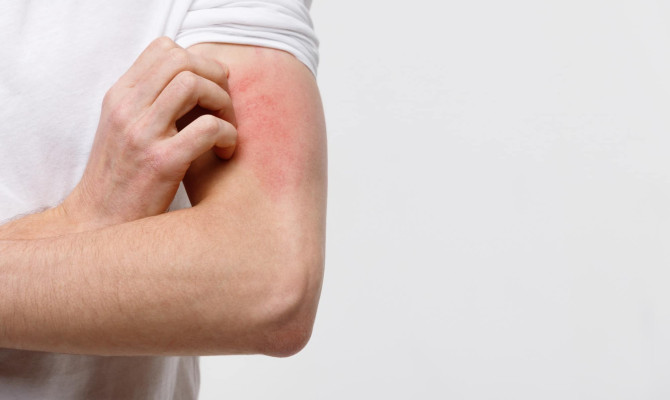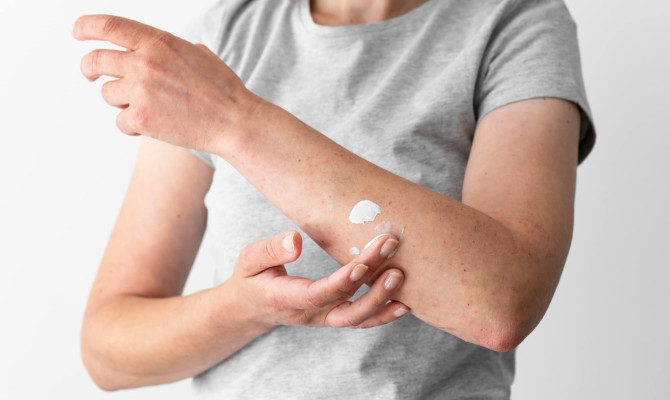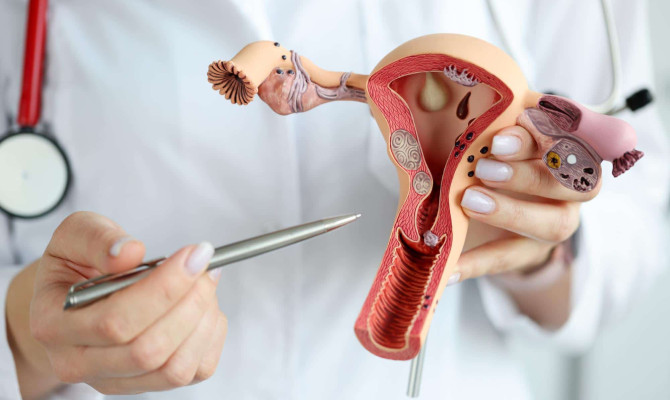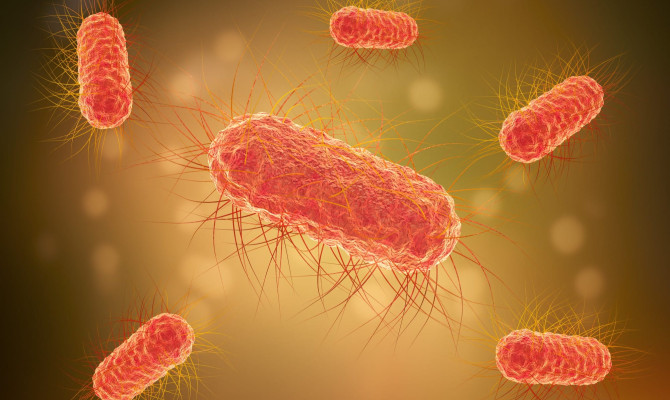Dermatitis : A skin disorder

- Dermatitis
- 14 Aug 2023
Overview
What is Dermatitis ?
The term “dermatitis” is used to refer to a wide variety of skin irritations as well as rashes that can be brought on by anything from heredity to an overactive immune system. It could be also caused by an infection, an allergy, or an irritant. Dryness, redness, and itching are typical symptoms. 1What is dermatitis | Researched based study from Clevelandclinic.org
In the medical term “dermatitis,” “derm” stands for skin, and “itis” relates to inflammation. Overall, the term refers to a state of skin irritation. Depending on the underlying reason, the rashes might range from hardly noticeable to quite severe.
Having dermatitis doesn’t really harm you. It’s not communicable, and it doesn’t indicate dirtiness or infection on the skin.1What is dermatitis | Researched based study from Clevelandclinic.org Your symptoms may be controlled by a variety of treatments and drugs.

Causes
What causes dermatitis?
Dermatitis has several causes, including genetic predisposition, environmental aggravators, and immune system activation.
Defense mechanism.
- The immune system might have false overreactions at times. A person with atopic dermatitis has an immune system that overreacts to even minute allergens or irritants, resulting in inflammation.
- Dermatitis runs in families, according to studies, so having it increases your risk. Alterations in the genes controlling a protein essential for skin health have also been discovered. Lacking sufficient amounts of that protein will cause skin damage.
- Skin’s immune system may revise its function as a protective barrier in response to environmental factors. That’s the main reason for dermatitis since it allows even more moisture to evaporate.
- Cigarette smoke and other air pollutants are two examples of possible environmental variables.
- Soap and other skin care products may also include fragrances that may cause dermatitis.
- Chemicals and other irritants can aggravate the skin, leading to dermatitis in certain people. Exposure to fluoride, for instance, through drinking water or toothpaste, has been linked to perioral dermatitis.
Other disorders that don’t cause dermatitis but frequently coexist with it are:
- Lack of sleep
- Depression
- Anxiety
- Allergies
- Asthma
Symptoms
What does dermatitis look like, and what are the symptoms?
Depending on the form of dermatitis, the symptoms will vary. One or more types might be observed in some patients. The following symptoms may or may not be present, depending on the type. 1What are the symptoms | Researched based study from Clevelandclinic.org
- Itching.
- Itchy, red bumps and rashes.
- Rash that has a burning sensation or appearance.
- Dry skin.
- Blisters filled with fluid.
- Skin that has thickened, hardened, and swollen.
- Skin that is crusty, flaky, and wrinkled.
- Sore, aching ulcers.
- The rashes may exude fluid or bleed if touched.
Types
Types of Dermatitis
Dermatitis comes in a wide variety of forms. Some can go on for quite some time, while in others there may be periods of flare-ups and remission 2Types of dermatitis | Researched based study from Nationaleczema.org . Dermatitis can affect both children and adults, however, there are some forms that affect young kids more frequently.
- Eczema is a frequent name for this condition.
- The onset of atopic dermatitis is often in infancy and might have a genetic component. But it might also manifest itself later in life.
- Atopic dermatitis cannot be cured currently.
- Those who suffer from this ailment often go through phases of intense symptoms followed by remission.
- Dry, rough, and itchy areas of skin are common during flare-ups. 2Types of dermatitis | Researched based study from Nationaleczema.org
- When an allergen comes into contact with your skin and triggers an immune response, you get contact dermatitis. Rash symptoms associated with these responses include pain, itching, and blistering.
- There are two main causes of contact dermatitis: allergies and irritants. Irritating contact dermatitis happens when the skin is directly harmed by an irritant .
- However, in allergic contact dermatitis, the immune system’s reaction to the foreign material is what actually causes damage to the skin.
Dyshidrotic dermatitis
- Because of dyshidrotic dermatitis, the skin is unable to defend itself. This causes the skin to become dry and irritated, and in certain cases, tiny blisters may form.
- People who perspire a lot on their feet and hands are more susceptible to developing this condition .
- Cradle cap is a common name for infantile seborrheic dermatitis. Although atopic dermatitis most frequently affects the scalp, it can also show up elsewhere, including the chest, face, and ears.
- Scaly areas, discoloration, and dandruff are common side effects. These symptoms may be exacerbated by stress or sleep deprivation . 3Types of dermatitis | Researched based study from Dermnetnz.org
- Seborrheic dermatitis can be adequately treated, but there is yet no cure.
- This disorder is characterized by a localized area of skin itching, which is brought on by stress or an irritant to the skin. Rough, raised, and itchy patches of skin will appear, most often on the face, neck, wrists, forearms, thighs, and groin.
- An itchy skin patch is often the first sign of neurodermatitis. Itching increases when you scratch.
- Oval skin lesions, known medically as “nummular dermatitis,” typically appear after a wound has been sustained.
- These lesions appear like a coin or nummular. But there are other causes of nummular eczema besides skin injuries like burns, abrasions, or insect bites.
- One or more coin-shaped lesions may form as a result of this disorder. The patches have a long shelf life, sometimes months.
- Skin abnormalities from inadequate blood flow characterize this kind. Discoloration and possibly a thickening of the skin on the lower extremities are possible results.
- Stasis dermatitis typically manifests itself towards the ankles because impaired circulation commonly occurs in the lower legs. Although uncommon, stasis dermatitis can also affect other parts of the body than the lower legs.
- Accumulation of sebum, perspiration, corneocytes, and bacteria in a small region of the skin leads to dermatitis neglecta, which manifests as a compact and tenacious crust of filth. Infrequently seen dermatitis neglecta is triggered by sloppy personal hygiene practices.
- Dark, waxy scales resembling cornflakes grow on the skin when hygiene is neglected.
Diaper dermatitis
- Diaper dermatitis occurs when a rash develops on a baby’s skin everywhere it is in contact with a diaper.
- Wetness, movement, and waste products all contribute to the breakdown of the skin. In mild situations, you can cure it at home and feel better in a few days.
- If the diaper rash is severe, your infant may need medical attention from a doctor. 4Diaper dermatitis| Researched based study from Clevelandclinic.org
Treatment
How is dermatitis treated?
Different forms of dermatitis require different treatments, which are explained in depth on their respective sections.
- When your skin is feeling dry, use an emollient instead of soap after a shower or bath.
- Acute eczema that is exudative, or blistering responds well to potassium permanganate soaks.
- Paste bandages can be helpful in allowing topical steroid creams to more effectively soothe and heal scratched skin . 3How is dermatitis treated Researched based study from Dermnetnz.org
- If your skin is dry, try an ointment, and if it’s moist and teary, go with a cream containing topical steroids. Most may be used once every day and still be effective. Use on inflamed areas of skin to help alleviate eczema’s inflammatory symptoms.
- Products with a high concentration of active ingredients are typically used for 7-14 days, after which the dosage and application frequency is tapered down to once or twice per week .
- In order to avoid the disease from returning and the symptoms from flaring up for long periods of time, steroid therapy twice weekly is generally prescribed.
Anti-inflammatory creams and ointments
- Eczema can be controlled without the long-term risks associated with powerful steroids by using Pimecrolimus and tacrolimus .
- Ruxolitinib is among the newer small molecules being researched for dermatitis treatment . 3How dermatitis is treated | Researched based study from Dermnetnz.org
Physical methods
- Intractable cases of atopic and discoid dermatitis may benefit from treatment with ultraviolet B and Psoralens UVA (PUVA) . 3How dermatitis is treated | Researched based study Dermnetnz.org
- Antihistamines – a sedating antihistamine is typically required to reduce the itching associated with eczema.
- If Staphylococcus bacteria and herpes simplex virus are both present in dermatitis, a combination of antibiotics and antiviral medications may be necessary for treatment .
- Less than 2% of those with persistent eczema will not have their condition properly treated with the aforementioned immunosuppressive medications. Potential treatments for dermatitis include immunosuppressive drugs. It is common practice to consider the drugs azathioprine, cyclosporin, and methotrexate .
- In the case of severe dermatitis, there are already available and actively being developed biological therapies, including antibody treatments that precisely target the major mediators of inflammation in dermatitis. Dupilumab, lebrikizumab, Nemolizumab, and tralokinumab are only a few of the injectable therapies available.
- To treat moderate to severe atopic dermatitis, numerous nations have approved the use of the oral small molecules baricitinib, upadacitinib, and abrocitanib . 3How dermatitis is treated | Researched based study from Dermnetz.org
Self care
Self care measures
You may also treat yourself without medical help by doing the following : 1Self care measures| Researched based study from Clevelandclinic.org
- Put on some lotion.-Moisturize your skin right after you get out of the shower or bath. This aids in retaining moisture for the skin.
- Keep it cool.-Keep the temperature low and the humidity low.
- Take care of your skin.-Avoid anything that can cause discomfort. This consists of coarse textiles like wool.
- Reduce your anxiety.-Do what you can to maintain low-stress levels. You should consult a therapist for talk therapy and a psychiatrist for any necessary medication.
- Take a relaxing, tepid shower.-Water should be lukewarm, not boiling. You shouldn’t take more than one shower or bath every day. To avoid skin irritation, use a gentle soap. You should wash with an unscented soap or cleaner.
- Try not to scrape.-Itching your dermatitis can only make it worse. There’s a chance you’ll rip the skin and get an infection.
Diagnosis
Diagnosis of Dermatitis
Your doctor will examine your skin very carefully. They will be on the lookout for a rash, redness, scales, dryness, and other telltale symptoms of dermatitis. 1Diagnosis of dermatitis | Researched based study from Clevelandclinic.org
They will inquire about your current state of health.
- Do you have a rash?
- Does it feel like your skin is on fire?
- Could it be that your skin is dry?
- To what extent have you been exposed to substances that might cause skin irritation?
Dermatitis may typically be diagnosed with a simple skin inspection by your doctor. However, where uncertainty exists, the following tests may be administered:
- Diagnostic blood testing to rule out underlying conditions that might be causing the rash.
- A skin biopsy is used to identify the specific kind of dermatitis.
- Perform skin allergy test
Prevention
Preventive Measures for Dermatitis
- The first step in preventing dermatitis is raising awareness. Avoiding allergens or rash-inducing chemicals is the only approach to stop an allergic response.
- However, avoiding flare-ups is crucial if you suffer from eczema, which is not always avoidable.
- Scratching might cause an outbreak, so restrain yourself if you want to avoid discomfort. Scratching can cause infection by opening or reopening wounds and allowing germs to spread. 1Preventive measures for dermatitis | Researched based study from Clevelandclinic.org
- Shorter baths, gentle soaps, and warm water rather than hot water can all help avoid dry skin.
- In addition, many people experience relief when they moisturize regularly (especially after a shower).
- After washing your hands, use a water-based moisturizer; for excessively dry skin, use an oil-based moisturizer.
Outlook
Outlook
Dermatitis is a skin disorder with several potential triggers. Inflammation, redness, and itching are some of the symptoms. Dermatitis comes in a variety of forms, each with its own set of symptoms and root reasons. Trigger avoidance, medication, hydrating the afflicted region, and behavioral modifications may all be part of the management strategy. It is recommended that anyone suffering from dermatitis symptoms consult their doctor to identify the most effective therapy.
Any feedback on this article?
 This Articles content was accurate
This Articles content was accurate Very Informative Article
Very Informative Article I have a question or a comment
I have a question or a comment
 This article contains inaccurate content
This article contains inaccurate content This article was not helpful
This article was not helpful I have a question or a comment
I have a question or a comment
We appreciate your helpful feedback!
Checkout our social pages
References
-
Cleveland Clinic
Dermatitis | Overview | Diagnosis | Self care | Prevention
-
National Eczema Association
An Overview of the Different Types of Eczema | Treatment
-
DermNet
Dermatitis | Types | Treatment
-
Cleveland Clinic
Diaper Rash (Diaper Dermatitis) | Type






































